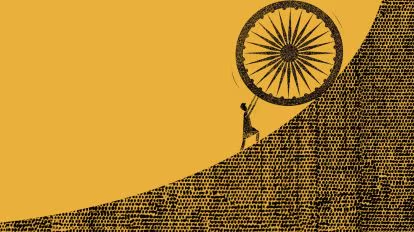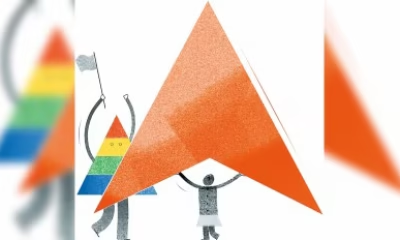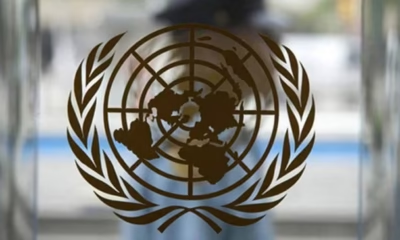
|
Getting your Trinity Audio player ready...
|
(The article was originally published in Indian Express on November 08, 2025 as a part of Dr Madhav’s column titled ‘Ram Rajya’. Views expressed are personal.)
Prime minister Narendra Modi inaugurated year-long celebrations commemorating 150 years of the stirring national song Vande Mataram. He described the song as “an enduring symbol of devotion to the nation”.
Vande Mataram was the war cry of thousands of freedom fighters during the independence movement. It first appeared on the horizon through a novel called Anand Matt, written by Bankim Chandra Chattopadhyay on November 7, 1875. As the Indian National Congress movement turned into a mass movement in early 1900s, Vande Mataram became the main slogan and inspiration for millions. “The partition (of Bengal) took effect on 16 October 1905. The leaders of the movement declared it to be a day of mourning. The street of Calcutta were full of the cries of ‘Bande Mataram’ which overnight became national song of Bengal and which was soon to become the theme song of national movement”, historian Bipin Chandra wrote.
The song was declared as the National Song of India, on January 24, 1950 by the Indian Constitution. However, the song also endured a tragic journey, from that of an inspiration to millions of freedom fighters to victim of communal politics.
Rise of Muslim League in the Indian political firmament and its advocacy for a separate Muslim identity based on religion in early 1900s posed a serious challenge to the Congress leadership’s belief of “one nation – one people”. Gandhi, a firm believer in Hindu-Muslim unity, sought to cajole the League leadership into supporting the unity of the nation, a tactic which many later-day commentators thought as naive, if not foolish.
The more Gandhi and Congress came forward to offer concessions, the harder League’s position became. One early victim of this League stridency was Vande Mataram. It became a regular practise since 1905 to sing Vande Mataram at all the important Congress events. The annual Congress session was held in Kakinada in December 1923. Gandhi was in Yeravda prison. Maulana Mohammad Ali, who was elected as the president of the session, was present along with 12,000 delegates and senior leaders like Motilal Nehru, Maulana Abul Kalam Azad, Sarojini Naidu, Sardar Patel and Kasturba Gandhi.
As per the convention in vogue, Pt. Vishnu Digambar Puluskar, a renowned Hindustani musician from Maharashtra, was there to sing Vande Mataram at the inaugural. When Puluskar climbed the dais, Mohammad Ali raised objection saying that it would hurt the sentiments of religious Muslims. Seeing the silence of the leaders present on the dais, Puluskar took it upon himself to challenge Mohammad Ali. “Digambar was incensed and hit back: ‘This is a national forum, not the platform of any single community. This is no mosque to object to music. There is no justification for a ban on music here. When the President could put up with the music in the presidential procession, why does he object to it here?’ Having silenced the President, without waiting for his reply, he proceeded to sing Vande Mataram and completed it. Respect for his sense of national pride and love of the motherland grew”, mentions a book on Puluskar about the incident.
Mohammad Ali, in protest, walked away while the song was being sung. The objection at the Kakinada session was more a ruse for enhanced bargaining of the League leadership than a genuinely religious issue. In fact, the Ali Brothers and other League leaders used to rise together with other Hindu and Muslim members of the Congress when the song was sung in the past.
To placate the League members, Congress introduced Mohammad Iqbal’s “Saare Jahan se Acchha” in its sessions. Yet, the opposition to Vande Mataram continued. It became a part of the so-called “Muslim grievances” against the Congress.
In July 1939, Gandhi wrote of Vande Mataram in Harijan, “No matter what its source was, and how and when it was composed, had become a most powerful battle cry among Hindus and Musalmans of Bengal during the Partition days. As a lad, when I knew nothing of ‘Anand Math’ or even Bankim, its immortal author, ‘Vande Mataram’ had gripped me, and when I first heard it sung it had enthralled me. I associated the purest national spirit with it. It never occurred to me that it was a Hindu song or meant only for Hindus. Unfortunately, now we have fallen on evil days…”
But the League’s insistence on rejecting it had a dramatic impact. In 1937, elections were held to the provincial councils. Congress needed League’s support to form governments in some of them. When the dialogue was initiated, Mohammed Ali Jinnah, supreme leader of the League, invoked the grievance about Vande Mataram and insisted that the song cannot be sung at the commencement of the sessions. A “committee” was hurriedly formed to review Vande Mataram. Rabindranath Tagore, Subhash Chandra Bose and Jawaharlal Nehru were made its members. The committee recommended that the song be truncated and only the first two stanzas be sung. Just a month before, in October 1937, Congress had declared Vande Mataram as the National Song of India.
The national song was partitioned in 1937 to appease the Muslim League. Ten years later, the nation was partitioned.




